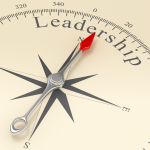The problem
Many of us are aware of the digital tsunami. Some of us experienced it first hand in the form of defunct business models or career-ending automation. Few of us anticipated the biological tsunami in the form of Covid-19. This has given everyone a taste of disruption.
But they are only two of many other macro-environmental forces at play. Political, social and economic forces come to mind. But there are at least six others. Thanks to globalisation and connectivity technology, these forces are compounding and in turn increasing the uncertainty and volatility of the environments in which we operate.
The myth
It is important to recognise some of the misleading myths in circulation. There is no ‘post-Covid’, ‘new normal’ or even ‘next normal’ to look forward to. Increasing disruption, and thus ‘abnormal’ is the backdrop to our lives going forward.
Many leaders have been seduced by the siren call echoing through the Swiss Alps. The World Economic Forum’s seductive Industry 4.0 theme (virus?) has permeated into many business discussions and all tech sector marketing collateral.
This technocratic vision that technology will solve all our problems is misleading at best. Yes, you can create a faster, smarter and cheaper business using new technologies. But if your business model is optimised for gentler times, i.e. the industrial era, then you have simply invested heavily in accelerated its demise. At the end of the day, a faster, smarter, cheaper Titanic is still a Titanic. And even one optimised to detect icebergs is no match for air travel.
Adapting our organisations to cope in these increasingly uncertain times requires much more than sprinkling AI, blockchain and IoT over the business processes. It is human nature to want to protect what has worked. But unlike the industrial era, in this so-called digital era, past successes are not indicative of future success.
From rigid to organic
Organisations birthed in the industrial era are fragile by nature. They were designed to operate in a stable environment where the forces were known. Much like a plate that can hold the deftly stacked spoils of a recently raided ‘all you can eat’ salad bar, industrial era organisations are optimised for one scenario.
If you were to expose the plate to a force it was not designed for, say dropping it onto a hard surface, then it would likely crack. Similarly this is true for many organisations today. Their leaders are disguising the cracks by doubling down on efficiency in order to fabricate profit. This is partly why Industry 4.0 is attractive. Keep in mind that one cannot cost manage one’s way out of a downwardly spiralling tailspin.
It would seem reasonable that we build organisations that are more akin to rubber balls. No matter what force they are exposed to, they do not lose their form. This is resilience. This is good, but we can do better.
It is a characteristic of living organisms that they need to experience some degree of disruption/adversity to grow. If you make a butterfly’s life easier by tearing open the cocoon from which it is emerging, it will be unable to fly. It is the very fight to escape the cocoon that activates its flying muscles. Adversity is known to strengthen our character. The muscle microtears that athletes experience from working out, lead to stronger muscles.
Author Nassim Nicholas Taleb referred to this property as antifragility. In human biology this is called biotensegrity. I prefer to call it super-resilience, not least because it is easier to say. More significantly, it highlights that whilst resilience is good in that resilient organisations can cope with increasing disruption, super-resilience is better because such organisations are able to turn chaos into value and thus thrive.
The actions
There are several actions a business leader needs to take to develop a super-resilient organisation. Transformation as proposed by the traditional business schools and management advisory firms is not one of them.
It is not that the goalposts have moved in this post-industrial world, it is that the game has radically changed. There are a whole new set of rules for engaging in what might be considered the digital age savanna.
Even sacred cows such as strategic planning are up for review. This has profound implications in respect of financial reporting and leverage.
Perhaps the ironic thing is that as we enter this digital age, people become more important. If senior executive team composition is anything to go by, leaders don’t get talent. But in fairness, in the post-industrial sense, nor does HR.
The benefits
Becoming a super-resilient organisation and being known to be super-resilient has its advantages. Clients, suppliers and the best talent want to be associated with an organisation that is optimised for an unknowable future.
Part of being a super-resilient organisation is behaving symbiotically with the environment. This includes local communities, society, governments and the planet. Thus super-resilient organisations do not solely exist for the benefit of shareholders.
We may well be on the verge of a great reset!




